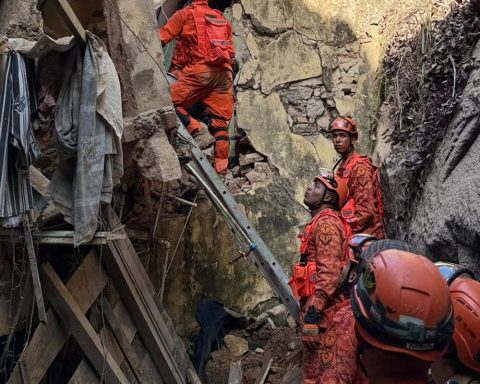In 2021, mining exports reached US$3,230.54 millionan amount that represents a rise in 23.3% compared to the previous year, while the employment of companies in the sector reached 31,323 annual average jobs, a value that was 2.7% higher than the previous year, according to a report by the Ministry of Mining.
The report to which Télam had access also indicated that mining exports in December registered an increase of 39.8% compared to the value of the same month of the previous year, a period in which there was an upward trend in the foreign exchange generated by the exports of the main commodities.
The figures are adapted to the values of general exports, since, according to data from the Argentine Investment and International Trade Agency, in the annual accumulated, foreign sales last year were the highest since 2012.
Among the performance of metals, the amount of exported gold stands out, which increased by 43.9% and silver by 227.2% compared to December 2020, while lithium exports grew by 202.3% compared to the same month of the previous year.

The strong demand from China in the midst of the shortage of materials for batteries explained such an increase since this affected the international prices of the mineral.
Regarding non-metallic minerals, they showed, for the most part, a positive behavior in December exports compared to those of the same month of the previous year.
The largest increase in exports was recorded in the case of limestone, dolomite Y Cretewith an increase of 100.1% in foreign currency generated, followed by gypsum with a rise of 82%, a situation that had an impact on export balances.
As for lime, it was one of the few minerals that registered a decrease of 8.9%.
The main mineral exporting provinces were Catamarca ($114.48 million), Jujuy (US$361.68 million), San Juan (US$845.51 million) and Santa Cruz (US$1,616.99 million).
The strong demand from China in the midst of the shortage of materials for batteries explained such an increase since this affected the international prices of the mineral.
As for sectoral employment, the annual average for 2021 stood at 31,323 jobs, a value (+2.7%) higher than the previous year’s 30,494; although private registered employment in December showed a drop of 0.2% compared to November, the month in which it recorded its peak, 31,765 jobs.
However, the value for December stood at 31,709 employees, which is above the 2021 annual average of 31,323 positions.
This increase can be seen since April, when it registered the minimum value in the year (30,998 employees), a situation that is in line with the post-pandemic recovery of the economy.
In the year-on-year comparison, the level of employment only showed negative variations in the Non-Metalliferous (-3%) and Minerals not previously classified (-14.2%) sectors.
While the rest have registered important improvements, in particular “Lithium Exploration and Financing” (+32.1%) and “Metalliferous Exploration and Financing” (+28.1%).
It is also observed, if a distinction is made by gender, how participation in mining employment by women has been increasing, going from representing 8.1% of the staff in 2019 to 8.9% in 2021.
Regarding employment by region, it can be seen that the Northwest and the Patagonia region were the ones that showed the greatest increases in their mining jobs (+9.3% and +8.2%, respectively), while the areas that registered negative impacts were the Chacopampeana Basin – Mesopotamia (-10.5%) and Sierras Pampeanas (-5.7%).
Regarding exports of provincial origin accumulated during the 12 months of the year. A relative importance of mainly mining exports is observed, over total exports, this shows the central role that mining activity occupies in these provinces.
Catamarca continues to lead this trend with a participation in exports of 85.8% of the total, followed by Santa Cruz 77.2%, San Juan 75.2% and Jujuy 68.9%.

















